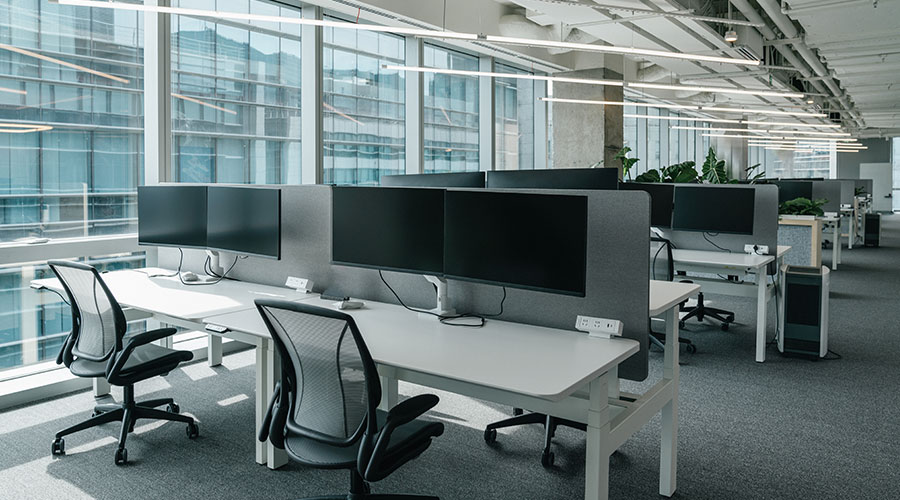Online Resources for Lighting Upgrades, Greenhouse Gas Accounting
Lighting upgrades — an important goal for the ARRA projects — also offer direct instructional value for facility managers. The goal for lighting upgrades was relight, not just lamp replacement, said Ann Kosmal, architect in the office of federal high performance green buildings. That approach not only saves energy but also can improve occupant comfort and satisfaction while offering opportunities for demand response.
In the analysis of spaces, the reflectance of ceilings, walls and floors was considered as another way to improve efficiency. More reflective surfaces can enable a space to provide substantially more average footcandles of illumination than darker and less reflective surfaces. Instead of simply installing new lamps and ballasts, the goal was to use high performance lamps and ballasts. When possible, new fixtures were installed and fixture location was changed to maximize energy efficiency. Task-ambient lighting and intelligent lighting controls —giving individual workstations control of the fixtures overhead — were considered. Outside, LED parking lot lights were installed.
The use of direct/indirect lighting can produce a significant improvement in occupant comfort, according to a
Light Right Consortium study. What’s more, energy savings result from the use of fewer fixtures and reduced ambient light levels. Only a subset of the best performing fixtures met the GSA specification.
GSA’s lighting projects led it to develop a statement of work template for relighting for ARRA projects, as well as specifications for interior lighting and interior lighting control systems, bi-level stairwell lighting specifications, and parking lot and garage lighting. To transfer the expertise it gained doing ARRA projects, GSA is making those
documents available to the public, as well as guidance for water efficiency, planted roofs and advanced metering. The documents can be found on the GSA website.
Kosmal advised facility managers to maximize energy efficiency before considering renewable energy. And that doesn’t mean simply installing green technologies. “The operations and the occupants, that’s where the rubber hits the road,” she saids.
A final point that facility managers should keep in mind is the value of greenhouse gas emissions as a metric for improving performance. Executive Order 13514 directed the federal government to measure, manage and reduce greenhouse gas emissions toward agency-defined targets. Measuring greenhouse gas emissions is valuable even if an organization isn’t trying to address climate change.
“The reason we use greenhouse gases is that they give us an integrative measure that opens our eyes to what’s happening across the federal government,” said Kampschroer. Attempts to reduce greenhouse gas emissions leads to a focus on driving waste out of systems. “We believe it will drive cost out of systems and create opportunities in the economy.”
Information about greenhouse gas accounting is available at the
Greenhouse Gas Protocol Initiative.
Related Topics:












